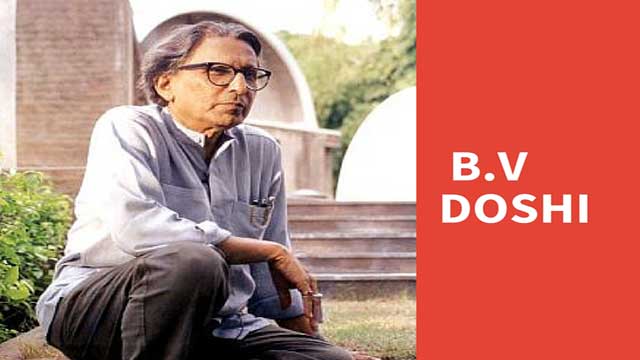
Life and Works of Architect B V Doshi
Over the years Architect Balkrishna Vithaldas Doshi (B V Doshi) has created architecture that relies on a sensitive adoption and refinement of modern architecture within an Indian context. The relevancy of his environmental and urban concerns make him unique as both a thinker and teacher. Architectural scale and massing, as well as a clear sense of space and community mark most of his work. B V Doshi’s architecture provides one of the most important models for modern Indian architecture.

Source : https://www.bbc.com/news/world-asia-india-43326825
He is considered to be an important figure of South Asian architecture and noted for his contributions to the evolution of architectural discourse in India. His more noteworthy designs include the Indian Institute of Management Bangalore and the Aranya Low Cost Housing development in Indore which was awarded the Aga Khan Award for Architecture. In 2018, he became the first Indian architect to receive the Pritzker Architecture Prize, regarded as the highest honour in the field of architecture. (Source : Wikipedia)
- B V DOSHI, completed his studies at J. J. School of Art, Bombay in 1950
- He became a senior designer on Le Corbusier’s projects in Ahmedabad and Chandigarh.
- In 1956 he established a private practice in Vastu-Shilpa, Ahmedabad and in 1962 he established the Vastu-Shilpa Foundation for Environmental Design.
- He has worked in centre for Environmental Planning and Technology (CEPT, AHMEDABAD) and Kanoria Centre for Arts, Ahmedabad. He was the founder member of Visual Arts Centre, Ahmedabad
General Philosophy of B V Doshi towards Design
- Flexible rather than rigid approach to the structure
- Timelessness in his architecture.
- Mythical sense –moving beyond historical examples of his own region
- Transformation between the building and the people that transcends the functional use.
- Doshi has persisted a deep belief in important of human institutions.
- The notation of flexibility and symbolism.
- Doshi made an intensive and sustained study of traditional Indian philosophy and ancient architectural texts, while maintaining a deep commitment to modernism.
- The architectonic scale and massing (vaulting), the clear sense of space and an attraction towards materials remain thematically strong throughout his works.




I like reading your site for the reason that you can always bring us new and awesome things, I think that I ought to at least say a thank you for your hard work.
– Henry
“No object is so beautiful that, under certain conditions, it will not look ugly.” ~ Oscar Wilde
Simplicity is an exact medium between too little and too much.
Simplicity is the ultimate sophistication.